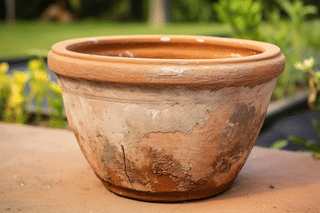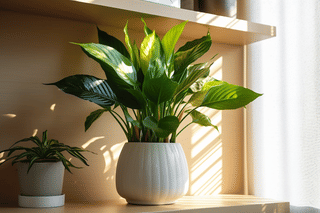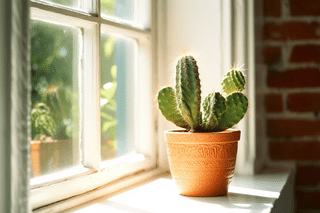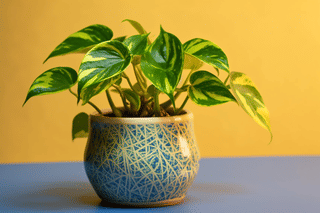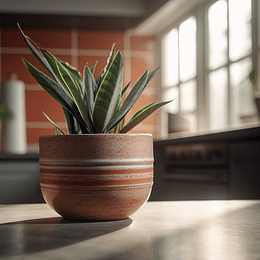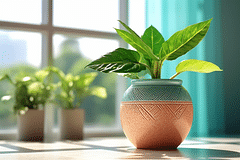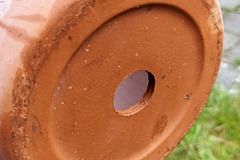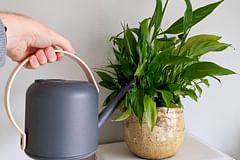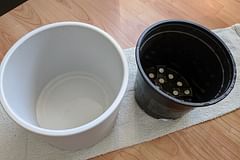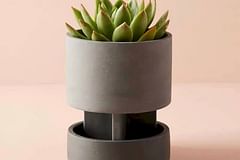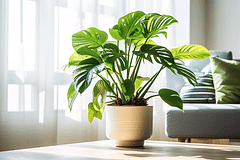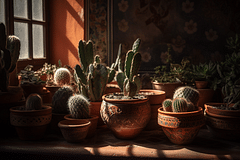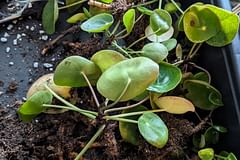Terracotta vs ceramic pots: a comprehensive plant care guide
Discover the best choice for your precious plants: Terracotta vs Ceramic Pots! Uncover the key differences between these two popular pot options and make an informed decision. Start reading now!
Have you ever wondered if the type of pot could ever a difference in your houseplant's health? You've come to the right place! In this comprehensive plant care guide, we'll dive deep into the differences between terracotta and ceramic pots. Because choosing the right pot for your plants is just as important as regular watering and providing sufficient sunlight.
In this guide, you'll learn everything from what terracotta and ceramic pots are, to their benefits and drawbacks. We'll find out which types of plants are best suited for each type of pot and provide useful tips on planting and caring for your plants depending on the kind of pot you have chosen.
This is the list of topics we'll look at in this plant care guide:
Let's get started, shall we?
Exploring terracotta and ceramic pots
Terracotta and ceramic pots are popular choices for most indoor and outdoor plants. But do you know what the differences between these two types of pots are? Let's delve deeper into what they are and how to use them effectively.
What are terracotta pots?
Terracotta is an Italian word that means "baked earth". Terracotta pots are very popular for gardening because the pots are porous, which means the pot lets the soil breathe. These types of pots are mostly reddish-brown, made from clay, and baked in ovens.
Terracotta pots are great for many plants, but particularly for those that prefer drier soil like succulents or cacti. The fact that the pots are so porous helps the soil to quickly drain any excess moisture. This is a huge benefit if you struggle with watering your plants too much. However, because these pots can dry out so quickly, you may need to water your plants more often in hot or dry climates.
What are ceramic pots?
Ceramic pots, also known as pottery, are also made from clay like terracotta but go through a different baking process. Ceramic pots are often glazed during the baking process. This makes it so you can have a more diverse range of colors and designs for your pots. Ceramic pots have a shiny, smooth surface and are less porous than terracotta.
Ceramic pots are perfect for plants that prefer moist soil. Unlike terracotta, ceramic pots don't allow the soil to breathe as easily and the soil tends to stay moist for a longer time.
Both types of pots are great, but which is better for you really depends on the type of plant you want to use it for and what your plant care habits are. We'll look at the ideal plants for each type of pot later on. First, let's look at the most important differences between terracotta and ceramic pots.
The key differences: Terracotta vs. ceramic pots
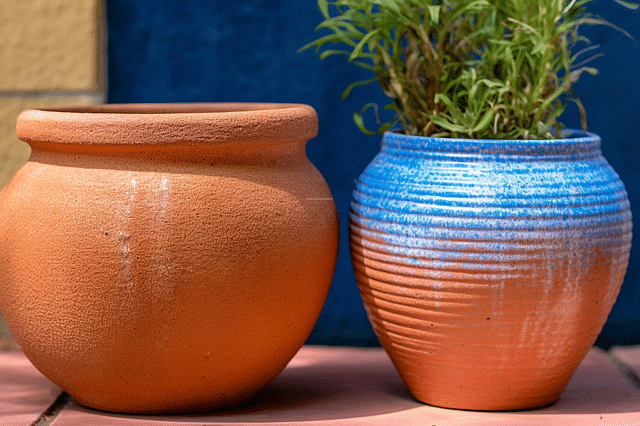
When it comes to choosing the perfect pot for your plants, it can be a tough decision between terracotta and ceramic pots. This guide is here to help you with that! Let's dive into the key differences between these two popular types of pots.
Material and durability: What are terracotta and ceramic pots made from?
Terracotta pots are crafted from baked clay. They are known for their durability and breathability, making them perfect for plants that thrive in well-aerated and dry soil.
On the other hand, Ceramic pots are made from kiln-baked natural clay and they're usually covered with a waterproof glaze, which makes them great for moisture-loving plants as they retain water quite well.
Porosity: How does water retention differ between these pots?
Terracotta allows water and air to pass through its walls easily. This creates an excellent environment for root systems that don't like to be waterlogged. Any excess water can easily evaporate and the soil dries out relatively quickly.
Ceramic pots, on the other hand, are non-porous because of their glazing, making them better at retaining moisture in the soil. So, they are best for plants that require consistent moisture levels.
Weight: Which pots are heavier: terracotta or ceramic?
When it comes to weight, Terracotta pots are generally lighter than ceramic pots. This makes them easier to move around your garden or home. However, the higher weight of ceramic pots can be a huge benefit for larger plants, because it provides stability and tips over less easily.
Aesthetics
Lastly, let's talk about looks! Terracotta pots have a classic, rustic appeal with their warm, earthy tones. They create a natural and timeless look, fitting effortlessly into any garden design.
Ceramic pots, however, offer a wider variety of colors, shapes, and finishes. They are an excellent choice if you're looking for a stylish statement piece to perk up your plant collection.
Now that we've looked at some of the biggest differences between terracotta and ceramic pots, let's look a little closer at each of these types of pots. We'll start with the terracotta pot.
Advantages and disadvantages of terracotta pots
We've already discovered that terracotta pots are lightweight baked clay pots and they're great for plants that love drier soil. Now let's look a little more closely at the advantages and disadvantages of terracotta pots to help you choose the right type of pot for you and your plant.
Why should you choose terracotta pots for plant care?
First things first, terracotta pots have a natural and rustic charm that's impossible to resist! I mean, who wouldn't want to add some traditional and earthy vibes to their home or garden? But you may be wondering if terracotta is the best choice of pot for planting your plant.
There are several reasons why choosing terracotta for your plants is a great idea. Let's have a look at these reasons!
Healthy and happy roots
Terracotta pots are porous, and their ability to absorb moisture quickly helps them to pull excess water out of the soil, preventing root rot and maintaining a balanced moisture level. This makes them ideal for plants that prefer dry or well-drained soil.
Cool and comfortable environment
These breathable pots are great at keeping the soil inside of the pot cool, because of the excellent airflow. This helps to protect your plant's roots against extreme temperature changes and is especially nice if you keep plants outdoors in the hot summer.
Lightweight
One of my favorite features of a terracotta pot is its weight. It's a strong and durable pot that's still very lightweight. This makes it easy to move around. They also come in a variety of shapes and sizes, so there is always a lightweight, but protective pot for any of your plants out there.
What are the drawbacks of terracotta pots?
Plants can look fantastic in terracotta pots, but there are a few things you should know before you make a decision. Let's look at some of the disadvantages of using a terracotta pot for your plants.
Frequent watering
Because terracotta pots absorb water, they dry out much faster than ceramic pots. If you tend to forget to water your plants or live in warm climates, you might need to water more often. To some, this might be a bad thing, but this is great news for those of you that tend to water your plant too much.
Very little variety
One of the downsides of a terracotta pot is that all of them look alike. They're all brownish-red and have similar shapes.
Discoloration
One of the great features of terracotta pots is that they absorb excess moisture from the soil and evaporate it. One of the downsides of this is, however, that it will absorb impurities and fertilizers as well. This will discolor the pot over time. Often the pot will get shades of white all across its surface. This is the salt in the fertilizer.
Some people like the look of this "aged" pot, so it could be an advantage to you. Luckily, if you don't like this look, the pot is very easy to clean. You can run a wet paper towel or microfiber cloth on the outside of the pot to clean it and it'll look as good as new.
Susceptible to frost
These pots are also prone to cracking if they're left in freezing temperatures. The moisture in the air pockets in the pot will expand when it's freezing outside and crack the pot. You can easily avoid this by bringing them indoors during colder months or keeping them out of cold drafts.
Now that you have a good overview of the terracotta pot, let's have a look at the advantages and disadvantages of ceramic pots.
Advantages and disadvantages of ceramic pots
Ceramic pots are an extremely popular option and for good reason. They have many benefits but also a few limitations. Let's look at the pros and cons to help you make the best choice for your houseplants!
Why should you choose ceramic pots for plant care?
Ceramic pots are a great option for your plants! They come in so many shapes, sizes, and colors, but that's not all! Let's look at all advantages of ceramic pots.
Heat Resistance
Ceramic pots are excellent at insulating your plants. This means they're great at protecting the roots from extreme temperature changes. Ceramic pots are usually a bit thicker, so they'll soften the extreme temperature changes to minimize the damage.
Moisture Retention
Ceramic pots usually have a waterproof glazed layer on them, which allows them to retain moisture longer. This feature can be particularly beneficial for those plants that love a consistent level of moist soil.
Aesthetic Appeal
Ceramic pots are typically more decorative and stylish compared to other pot types. They come in all shapes, sizes, designs, colors, and finishes, so you're guaranteed to find a pot that fits your style.
What Are the Drawbacks of Ceramic Pots?
So ceramic pots have many great benefits, but they also have downsides. Let's look at some of the most important downsides of using ceramic pots for your plants.
Weight
Ceramic pots can be quite heavy, which can be a disadvantage if you plan on moving your plant around a lot. However, if you've got larger plants that you don't plan on moving anywhere, this weight is a huge advantage. As we've seen before, this higher weight will keep the plant more stable.
Watering Schedule
Most ceramic pots have a waterproof glaze, so they won't drain moisture as easily. This means that these types of plants might not be the best choice for plants that love dry soil, like succulents and cacti.
Breakable
Ceramic pots are tough pots, but they're also heavy, which means they'll break quite easily if they're knocked over. This becomes less of a problem when you get the larger pots because these pots are naturally more stable.
Now that you've seen the advantages and disadvantages of both the terracotta and ceramic pots, you should have a good idea of which pot fits your plant care routine well and which one might not be well suited for you and your plant.
However, if you're still unsure, let's look at the best plants for each type of pot.
Best Plants for Terracotta Pots
Terracotta pots are typically more breathable compared to ceramic pots, making them excellent for plants that don't like being waterlogged. Let's take a look at some plants which love these pots.
- Succulents: Succulents are top-tier terracotta pot plants. These pots provide the excellent drainage that these desert plants love, helping them stay healthy and dry.
- Cacti: Similar to succulents, cacti thrive in dry conditions. Terracotta pots help ensure the soil dries out quickly, providing an ideal home for these prickly plants.
- Orchids: Surprising, right? While they do love moisture, orchids also need good air circulation around their roots, something terracotta pots offer.
Best Plants for Ceramic Pots
While terracotta pots are great for plants that love dry and airy soil, ceramic pots are great for plants that like their soil to be moist for longer. These types of pots are fantastic for tropical houseplants, so let's look at a few!
- Monstera: Monsteras love soil that stays moist most of the time, just like the soil in their natural habitat. The ceramic pots hold the moisture in the pot and make sure your Monstera can absorb it for a few days.
- Pothos: Another fantastic plant for ceramic pots is a Pothos. This plant loves soil that stays moist for a few days before drying out. The ceramic pot will keep the soil in just the right moisture level for your Pothos to be happy.
- Peace Lily: Last but not least is the Peace Lily, the moisture-loving houseplant. This plant thrives in ceramic pots, especially when using soil that holds moisture for a few days.
Remember, when using ceramic pots, be mindful of water drainage. These pots often don't have a drainage hole at the bottom. It's essential to prevent your plant's roots from sitting in water, which could lead to root rot. So, choose a ceramic pot with adequate draining, or add a layer of pebbles at the bottom to ensure healthy and happy plants!
Thank you for reading this post! I hope it helps you to keep your plants healthy and beautiful! If you're looking for more guides on specific plants, you can always request a plant guide to get a guide for the plant you have trouble with.
Test your plant care knowledge
Quiz completed!
Want to learn more? Sign up for my newsletter to receive free tips in your inbox!
Sign up now!

